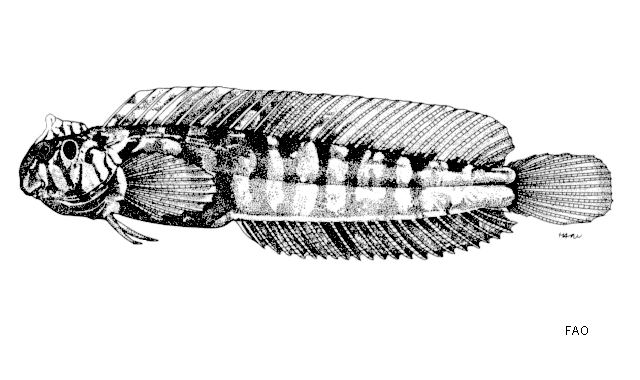| Blenniidae (Combtooth blennies), subfamily: Blenniinae |
| 6 cm TL (male/unsexed) |
|
demersal; marine |
| Western Indian Ocean: Persian Gulf, Gulf of Oman, and Pakistan. |
|
Dorsal spines (total): 12-12; Dorsal soft rays (total): 20-21; Anal spines: 2-2; Anal soft rays: 22-23 |
| Oviparous. Eggs are demersal and adhesive (Ref. 205), and are attached to the substrate via a filamentous, adhesive pad or pedestal (Ref. 94114). Larvae are planktonic, often found in shallow, coastal waters (Ref. 94114). |
|
Vulnerable (VU); Date assessed: 27 March 2009 (D2) Ref. (130435)
|
| harmless |
|
Museum: Jask, Mekran Coast, BMNH 1904.5.25.94. |
Source and more info: www.fishbase.org. For personal, classroom, and other internal use only. Not for publication.

